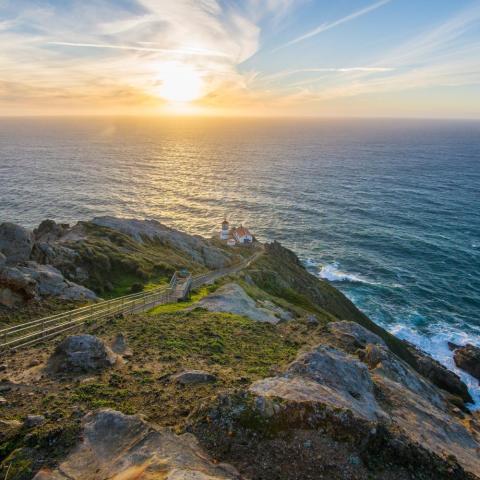
The closure on fishing on the Elwha River and its tributaries in Olympic National Park has been extended/NPS file
The Lower Elwha Klallam Tribe, Olympic National Park, and the Washington Department of Fish and Wildlife have agreed that it is necessary to extend the fishing closure in the Elwha River for another two years, from June 1, 2019, to July 1, 2021.
The fishing closure applies to all recreational and commercial fishing in the Elwha River and its tributaries. A fishing moratorium in these waters has been in place since 2011 to protect depleted native salmonid populations, including four federally listed fish species that are needed to re-colonize habitats between and upstream of the two former dam sites. Mountain lakes in the Elwha basin within Olympic National Park and Lake Sutherland will remain open to sport fishing from the fourth Saturday in April through October 31.
The Elwha and Glines Canyon dams were breached in 2013 as part of an historic and ambitious plan to reverse decades of environmental damage to an important river system. The Elwha River was once one of the most productive salmon streams in the Pacific Northwest, home to all five species of Pacific salmon. With the dams gone, salmon and steelhead again have access to more than 70 miles of unaltered river and pristine spawning habitat. Their populations are expected to grow to nearly 400,000.
Only one of the two dams—Glines Canyon—was located inside Olympic National Park, but the upper reaches of the Elwha River are within the park boundary.
The restoration of salmonid spawning and rearing in habitats upstream of the former Glines Canyon Dam is paramount to successful restoration. These early re-colonizers play an important role in establishing spawning and juvenile rearing in habitats of the upper watershed. Final impediments to migrating fish were removed from the Glines Canyon dam site in 2016.
To date, fisheries biologists confirmed upstream passage of adult Chinook salmon, sockeye salmon, coho salmon, winter and summer steelhead, bull trout, and Pacific lamprey past the former Glines Canyon Dam site, with some adults reaching as high as river mile 40 in the Elwha. Pink salmon and chum salmon have been documented upstream of the former Elwha Dam site but not above the Glines Canyon Dam site. Despite these encouraging signs, for all species, vacant upstream habitat indicates further recolonization and spatial expansion are needed to reach population abundances the Elwha watershed is capable of supporting.
The Elwha project partners evaluate spawner abundance, extent of distribution, and juvenile production each year throughout the system using a variety of tools including sonar, redd surveys, snorkel surveys, and smolt trapping. Recreational and commercial fishing will resume when there is broad distribution of spawning adults in newly accessible habitats above the former dam sites, when spawning occurs at a rate that allows for population growth and diversity, and when there is adequate escapement and a harvestable surplus. The salmon and steelhead populations are expanding into newly opened habitats, but are not yet at recovery objectives.
Monitoring ecosystem recovery in the Elwha is a cooperative effort among the Lower Elwha Klallam Tribe, Olympic National Park, NOAA Fisheries, U.S. Fish and Wildlife Service, U.S. Geological Survey, and Washington Department of Fish and Wildlife. For updated fishing regulations on waters within Olympic National Park, please visit http://www.nps.gov/olym/planyourvisit/fishing.htm. For waters outside the park, please visit http://wdfw.wa.gov/fishing/regulations/.




 Support Essential Coverage of Essential Places
Support Essential Coverage of Essential Places







Comments
I absolutely agree.
Just saw a vid on the dramatic come back of the previously extinct steelhead on the Elwah. Very inspiring. Beaver are still coming back and making pools for juvenile fish. I think I read that the Chinook on the Elwah had a 5 year cycle, not 4 year. This is going to take time. I live in Seattle and grew up in Port Angeles. These things take time, like the Mt. Saint Hellens aftermath. I have spent a lot of time in the Olyinpics and am thrilled and curious with this project and its progress.
could be that the salmon are not going further upstream be because they were born in the middle stretches? should not take a few returning salmon and move the eggs to the upper regions?